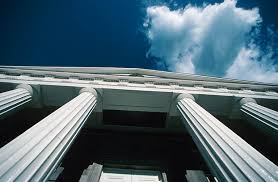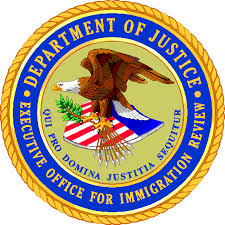____________
1) The Vanishing NEFs
a. North Carolina [Highlights added - jz]
 - - - -
- - - - - - - -
- - - -


b. Delaware Manual [Highlight added].


a) What reason in the world could there be, to design, develop, and implement a record maintenance system for the courts, where the emails, carrying the authentication data (the NEFs) vanish after 60 days, or whatever number of days the local court sets it to be?
b) Wouldn't switching to such system of vanishing records be deemed a change in the FRCP? Or may be Local Rules of Court?
c) Is it likely that the courts usurped authorities that were not theirs to create such system?



____________
2) Initiating Documents
Numerous examples from various U.S. Courts around the country demostrate that initiating records - filing of complaints, issuing of summons, are executed through CM/ECF.
Not in Los Angeles.
a. Idaho


b) California Central District (Los Angeles)
ANDERSON ON CIVIL E-FILING
IN THE CENTRAL DISTRICT OF CALIFORNIA
THE UNOFFICIAL
CIVIL E-FILING USER MANUAL
For E-Filing Users In
THE UNITED STATES DISTRICT COURT
CENTRAL DISTRICT OF CALIFORNIA
Page 6: Proof of Service
--------5. Proof of service
--------If all of the parties in the action are represented by E-Filing users who have not opted out
--------of electronic service, you do not need to attach a proof of service to your E-Filed document, and
--------you do not need to serve your E-Filed document. The E-Filing System will e-mail a Notice of
--------Electronic Filing to each user and that will serve as the proof of service. However, if there are
--------any parties who are not registered E-File users or who have opted out of electronic service, you
--------must attach a proof of service to your documents showing service on those parties using
--------traditional methods (i.e., mail, personal service, etc.) before you E-File the document.
--------Before E-Filing a document, you can find out if any parties are not registered E-Filing
--------users or have opted out of electronic service and thus must be served manually. Login to EFiling,
--------click on “Utilities” at the top of the page, then click on “Mailings,” and then click on
--------“Mailing Info for a Case.” Enter the case number and the system will give you a list of manual
--------filers in the case. The most likely situation where this will occur is in cases involving pro per
--------parties, but it could also happen with attorneys who have just appeared in a case and have not
--------registered for E-Filing or attorneys who have elected not to receive electronic service.
--------The Court’s Local Rules do not address timing issues related to E-Filings. For instance,
--------Local Rule 6-1 sets a deadline for filing motions that is based upon whether the motion is served
--------by mail or by personal service. Since the rule contains no indication of which deadline to use for
--------E-Filing, it is best to use the longer deadline associated with serving a motion by mail.
Page 13: Proof of Service
--------L. The Notice of Electronic Filing
--------The system will present you with a Notice of Electronic Filing (“NEF”) screen and will
--------also e-mail you a copy of the NEF. The Notice of Electronic Filing (“NEF”) is your proof that
--------the document has been E-Filed. You should print the screen to a piece of paper or a PDF (or
--------both) before proceeding, because you will need to attach the NEF as the last page of the courtesy
--------copy that you submit to the Court.
--------The NEF includes a “document number” and a link. Be sure to note that document
--------number, as you will need it if you need to e-mail a proposed order to the Court. The NEF also
--------includes an “Electronic Document Stamp” which is a string of letters and numbers which Court
--------staff can use to verify the authenticity of the NEF. The NEF also contains the path and file name
--------of the document you uploaded and any attachments.
--------Be sure to read the next step before you click anything on this screen.
Page 16: Initiating Documents
--------III. PROCEDURES FOR SPECIFIC TYPES OF DOCUMENTS
--------A. Complaint and Related Documents (Civil Case Cover Sheet, Notice of
--------Assignment to Magistrate Judge, Notice of Interested Parties)
--------Filing Type: NOT E-FILED
--------Docketing Questions: None
--------Special Notes:
--------At this time, the complaint and related initiating documents should not be electronically
--------filed. In the future, the Court may implement a system for E-Filing new cases, but that system is
--------not yet operational.
--------Instead, submit the Summons, Complaint, Civil Case Cover Sheet, and Notice of
--------Interested Parties, along with the required filing fee (currently $350) or waiver documents, to the
--------Court on paper. The Summons (CV-001A), Civil Case Cover Sheet (CV-071), and Notice of
--------Interested Parties (CV-030) are all available in PDF on the Court’s web-site
--------(http://cacd.uscourts.gov) by clicking on “Forms” at the top and then clicking on “Civil Forms.”
--------The Complaint and Notice of Interested Parties should be bluebacked. The Summons
--------and Civil Case Cover Sheet should not be bluebacked. All documents should be two-hole
--------punched and labeled as originals or copies. You should submit one original and one copy of
--------each document for the Court to keep, plus one additional copy or face page to be conformed and
--------returned to your office. The Court also requires an additional copy (for a total of one original
--------and two copies) of the Civil Case Cover Sheet.
--------After you receive the documents back from the Court, you must scan the documents in
--------PDF format and e-mail them to the Clerk’s office within 24 hours. The following documents
--------should be scanned into a single PDF File, in this order: (1) the Complaint/Removal, (2) the
--------Notice of Assignment to Magistrate Judge, (3) the Summons, and (4) the Cover Sheet.
--------Any other documents that were filed should be scanned by themselves into a separate
--------PDF file (i.e., the Certification and Notice of Interested Parties, etc.) and e-mailed together with
--------the PDF you created above. However, it is not necessary to scan and return the civility
--------guidelines.
--------At this time, the Court is providing a one-page flyer on the procedure for scanning and emailing
--------documents. Be sure to check that flyer to make sure that you are following the correct
--------procedures, because the Court has made changes in the past, and may do so after this manual is
--------published.
Questions:
1) Aren't the rules described here Rules of Court?
2) Does this arrangement, with Anderson's unofficial/official manual comply with Rule Making Enabling Act?
3) What exactly is the authentication method of Complaints?
4) Why is Los Angeles different from other courts on this matter?
Suggestions:
It is very likely that upon investigation it would turn out that fraud relative to initiating documents and their authentication in CM/ECF was central to the frauds at the U.S. District Court in LA.

"This case should demonstrate that the FBI will pursue all allegations of judicial corruption vigorously, as public corruption violations are among the most serious of all criminal conduct and can tear at the fabric of a democratic society," said John F. Pikus, special agent in charge of the Albany division, in a prepared statement.
No comments:
Post a Comment